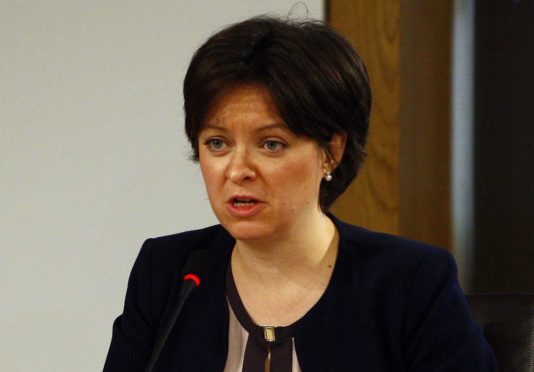The Scottish Government is under pressure to move jobs to Tayside and Fife after it emerged fewer than one in five civil servants are based outside the central belt.
Eighty per cent of the public sector posts are in Edinburgh and Glasgow, with just 2% located in Courier Country.
The figures, obtained by The Courier, have sparked fresh claims of central belt bias at the SNP administration, as jobs are hoarded in the two biggest cities and the regions deprived of a more active role in how the country is run.
It comes after the UK Government faced similar accusations over its closure of HMRC offices in cities including Dundee and Aberdeen – and operations moved to Edinburgh and Glasgow.
Lynn Henderson, from the PCS Union, said the figures clearly show a “centralising tendency of the Scottish Government” which, combined with the UK Government’s civil service office closures, poses a threat to regional economies.
“Our union believes that Scotland’s civil and public services are best delivered with well-paid, well-treated staff, with work spread across the country, bringing jobs and growth to communities in all parts of Scotland,” she said.
The data reveals a trend for the centralisation of Scotland’s civil service workforce, with the proportion of jobs based in Edinburgh and Glasgow up from 77% in 2008 to 80% a decade later.
There are just seven jobs in Fife, despite being one of the most populous parts of the country.
Dundee is home to 42 civil service jobs, although that will go up by 750 when the social security agency opens its headquarters in the city.
Jenny Marra, the Scottish Labour MSP, said the welfare HQ jobs were “very welcome”.
But she added: “It is clear though that the SNP’s priority over the past 10 years has been to centralise jobs in the central belt.
“These figures highlight the real lack of investment in Dundee’s workforce over the past decade of SNP government.”
Scottish Liberal Democrat leader Willie Rennie said people in “vast swathes of the country were missing out on the potential to contribute to the civil service”.
The Fife MSP added: “The government needs to be doing far more to spread jobs and opportunities across Scotland and let local people have a hand in shaping the communities they live in.”
The data covers all of the Scottish Government’s core directorates, most executive agencies and some non-ministerial departments.
It does not include public bodies and quangos such as the Scottish Social Services Council, Scottish Natural Heritage and the services responsible for prisons and courts.
A Scottish Government spokeswoman said: “It is important to note these figures do not include data from a number of large executive agencies, including Scottish Prisons Service, Crown Office and Procurator Fiscal Service, and Scottish Courts and Tribunal Service.
“The Scottish Government embraces flexible working with staff across the country, for example we have staff in Fife contributing to the civil service, but with an office base in Edinburgh.
“We also announced in September that the new social security agency, Social Security Scotland, will be headquartered in Dundee and recruitment is already underway for 80 full time new jobs in the city.”
Comment
The decision to locate the headquarters of Scotland’s new welfare agency in Dundee was rightly lauded.
The move will create or protect 750 jobs and that increased city workforce will add to the vibrancy of the centre.
This positive development however masks not only the ongoing failure to spread public sector work across the country, but the trend towards yet more centralisation.
The Courier has today published figures revealing that 80% of the devolved civil service workforce is based in Edinburgh or Glasgow.
UK ministers have also demonstrated a disposition to cluster public employment in the central belt through its programme of HMRC office closures.
Public sector jobs do not just bring employment to an area, they create a virtuous cycle of economic activity as workers spend their cash locally and private firms follow suit in basing their staff nearby.
They also allow parts of the country to experience a buy-in over how the country is governed.
While there can be logistical, cost and skills reasons for basing staff in existing administration hubs around the central belt, the force of technology should lessen those arguments.
Edinburgh can feel distant to those living and working outside of its reaches.
Both governments should listen to the case for decentralisation.
It is as much about connecting communities to decision-making as creating jobs in the areas that need them most.










